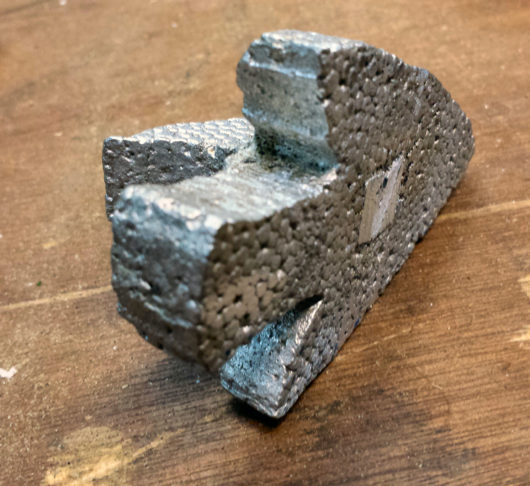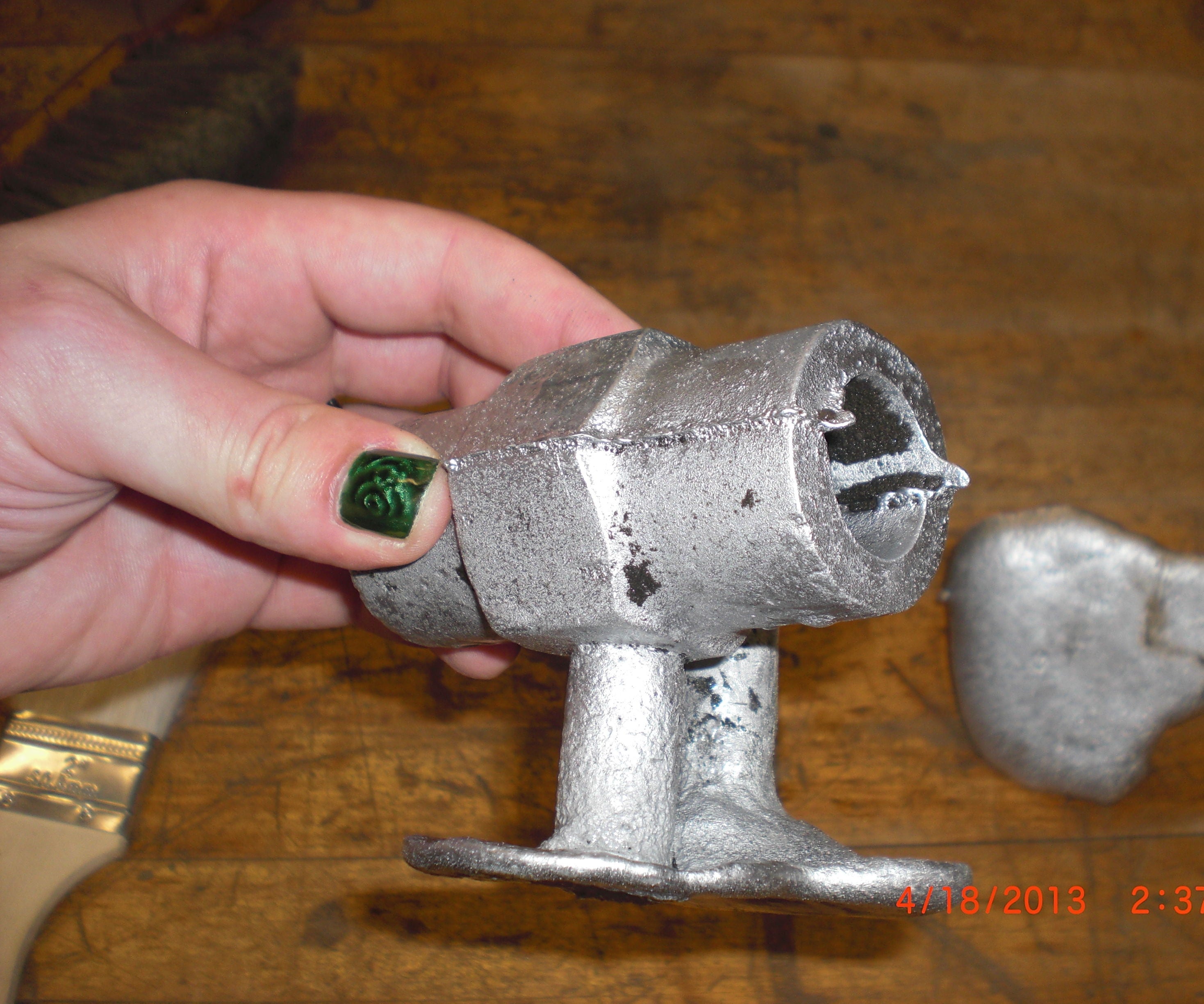Behind-the-scenes details of aluminum casting
Wiki Article
A Comprehensive Overview to Aluminum Casting: Methods, Makes Use Of, and Industry Insights
Aluminum casting is a critical process with diverse applications throughout numerous industries. This guide takes a look at numerous casting strategies, consisting of sand, die, and investment casting. Each approach has distinctive advantages, adding to aluminum's reputation for corrosion-resistant and lightweight elements. Recognizing these techniques is important for makers aiming to utilize aluminum's buildings. However, the landscape is quickly developing. The effect of present patterns on future practices warrants further expedition.Comprehending Aluminum: Characteristics and Advantages
Aluminum, a flexible steel, is widely recognized for its unique properties that make it an ideal option for different applications. It is lightweight yet solid, offering a superb strength-to-weight proportion that is particularly advantageous in industries such as aerospace and auto. Furthermore, aluminum exhibits remarkable corrosion resistance because of the development of a safety oxide layer, which enhances its sturdiness and durability.The steel is additionally extremely malleable, allowing for very easy shaping and construction, which adds to its widespread use in manufacturing. Additionally, aluminum is an outstanding conductor of electrical power and warm, making it important in electric and thermal applications. Its recyclability contributes to its charm, advertising sustainability in manufacturing procedures. The mix of these buildings not just enhances efficiency yet also minimizes energy consumption throughout its lifecycle, positioning aluminum as a key product in modern-day engineering and layout.
Introduction of Aluminum Casting Techniques

Sand Casting Approaches
Amongst numerous aluminum casting methods, sand casting stands out as one of the most widely used methods because of its versatility and cost-effectiveness. This technique entails developing a mold and mildew from sand, which can be quickly formed to develop complicated geometries. The process begins with packing sand around a pattern, generally made of steel or plastic, to create a tooth cavity that specifies the final shape. Once the mold is ready, molten aluminum is put into the dental caries, enabling it to strengthen and cool down. Afterward, the sand is removed, revealing the actors component. Sand casting is especially favored for generating large components and small production runs, making it an essential technique in different markets, consisting of auto and aerospace. Its adaptability to different layouts boosts its charm.Die Casting Processes
Die casting procedures stand for a very effective approach for generating elaborate aluminum parts with outstanding dimensional accuracy and surface area coating. This technique includes forcing liquified aluminum into a mold and mildew under high stress, assuring that also the most complicated geometries can be achieved. There are 2 main kinds of die casting: hot chamber and cold chamber. Hot chamber pass away casting appropriates for metals with reduced melting factors, while cold chamber die casting is preferred for aluminum because of its greater melting factor. Both approaches facilitate rapid manufacturing and can suit high volumes, making them perfect for sectors such as automotive and electronic devices. Reliable die casting requires precise temperature control and cautious mold and mildew design to protect against problems and ensure quality.Sand Casting: A Standard Approach
Contemporary casting methods have actually arised, sand casting stays a foundational technique in the aluminum market due to its versatility and cost-effectiveness. This traditional technique includes developing a mold and mildew from a mixture of sand and a binding representative, permitting for the production of intricate shapes and sizes. Sand casting is especially beneficial for reduced to medium manufacturing quantities, as it lessens arrangement expenses and time.The process begins with the development of a pattern, which is then placed in the sand to develop a tooth cavity. When the mold and mildew is ready, molten aluminum is gathered, loading the tooth cavity and taking the shape of the pattern. After cooling down, the sand is removed, revealing the finished cast part.
Sand casting is extensively made use of for generating automotive elements, equipment parts, and imaginative sculptures, highlighting its enduring relevance in numerous markets of the aluminum sector. (aluminum casting)
Die Casting: Accuracy and Effectiveness
Die casting is a procedure that supplies impressive accuracy and efficiency in aluminum production. This approach is extensively made use of throughout different markets due to its capability to produce intricate shapes with tight resistances. It also offers special difficulties that require innovative services to ensure perfect outcomes.Process Summary and Conveniences
When considering aluminum casting methods, die casting stands apart for its precision and performance. This process entails compeling molten aluminum into a mold and mildew under high stress, which link enables intricate styles and tight tolerances. The fast cooling of the metal warranties quick solidification, leading to top notch get rid of minimal surface area blemishes. Additionally, pass away casting deals excellent repeatability, making it suitable for huge manufacturing runs. The usage of reusable molds substantially decreases material waste and manufacturing time, adding to cost-effectiveness. Furthermore, the stamina and sturdiness of die-cast aluminum parts make them favorable for requiring applications. In general, die casting combines advanced modern technology with practical advantages, placing it as a leading selection in aluminum casting techniques.Applications in Numerous Industries
The adaptability of die casting allows its application throughout a variety of markets, showcasing its accuracy and performance. In the automobile market, pass away casting produces elaborate parts such as engine blocks and transmission real estates, adding to weight reduction and improved performance. The electronic devices industry take advantage of die casting by producing sturdy and light-weight housings for different devices, enhancing both capability and visual appeals. In the aerospace field, this method offers high-strength parts that endure extreme problems while keeping low weight. Furthermore, consumer items suppliers make use of pass away casting for generating parts that need complex geometries and limited tolerances. In general, die casting plays an important role ahead of time innovation and product style throughout numerous industries, highlighting its relevance in modern production.Difficulties and Solutions
Numerous difficulties occur in the die casting process that can impact both accuracy and effectiveness. One significant issue is the event of problems such as porosity, which can compromise the honesty of the end product. Additionally, preserving specific temperature control is vital, as variants can bring about irregular product properties. Tool damage likewise existing difficulties, commonly leading to enhanced production expenses and downtime. To alleviate these issues, producers utilize innovative simulation software application to predict prospective troubles before production starts. Executing normal upkeep routines for equipment and devices additionally assists keep performance. Spending in high-quality materials and using experienced service technicians can boost total procedure integrity, ensuring that high standards of precision are regularly satisfied.Investment Casting: Information and Intricacy
Although investment casting is commonly connected with high precision and intricate designs, its true toughness lies in the capability to generate complicated geometries that would certainly be challenging to attain with various other producing processes. This method utilizes a wax pattern, which is coated with a refractory product to produce a mold and mildew. As soon as the mold and mildew is formed, the wax is dissolved, leaving a dental caries that flawlessly reproduces the initial pattern.
Applications of Aluminum Castings Across Industries
Financial investment casting's ability for creating detailed aluminum components has made it an important method across different markets. In the automotive field, aluminum castings are used for engine blocks, transmission real estates, and suspension parts, adding to weight reduction and enhanced gas efficiency. The aerospace industry take advantage of aluminum castings in airplane frameworks, generator real estates, and touchdown equipment, where strength-to-weight ratio is important. Aluminum Foundry. In addition, the electronic devices field employs aluminum castings for heat sinks and enclosures, ensuring reliable thermal management and toughness. In the building and construction sector, aluminum spreadings are made use of for architectural aspects, window frames, and architectural components, providing deterioration resistance and visual appeal. In addition, the aquatic industry incorporates aluminum castings in watercraft engines and installations because of their light-weight and resistance to salt water rust. Generally, aluminum spreadings show adaptability and functionality, making them crucial in varied pop over to this site applications across countless fieldsCurrent Fads and Future Directions in Aluminum Casting
Recent advancements in aluminum casting innovation are forming the future of manufacturing across numerous fields. One significant trend is the raising fostering of additive manufacturing methods, which permit more complicated geometries and decreased product waste. Additionally, the integration of automation and robotics enhances manufacturing procedures, boosting performance and accuracy.
Sustainability is likewise a driving pressure, with suppliers focusing on recycling aluminum and lowering energy consumption throughout the casting process. This shift not only decreases environmental impact yet also decreases functional expenses.
Additionally, improvements in simulation software application allow much better layout and optimization of casting procedures, leading to higher quality items with less flaws. As industries continue to accept these advancements, the demand for high-performance and lightweight aluminum parts is anticipated to climb, even more solidifying aluminum casting's role in the future of manufacturing. In general, these patterns highlight a dedication to effectiveness, sustainability, and technical innovation in the aluminum casting market.
Regularly Asked Inquiries
What Are the Ecological Impacts of Aluminum Casting Processes?

How Does Aluminum Casting Contrast to Other Materials?
Aluminum casting deals light-weight, corrosion-resistant residential or commercial properties, making it advantageous compared to heavier steels like steel. Its thermal conductivity and simplicity of check my source creating better boost its appeal, while specific plastics supply adaptability lacking in conventional aluminum applications.What Safety Actions Should Be Taken During Aluminum Casting?
Throughout aluminum casting, important security measures include putting on protective equipment, making certain proper air flow, making use of fire-resistant products, maintaining equipment frequently, and sticking to safety protocols to avoid mishaps and direct exposure to harmful fumes and liquified steel.Exactly How Can I Pick the Right Aluminum Alloy for Casting?
Choosing the best aluminum alloy for casting includes reviewing mechanical buildings, rust resistance, and desired application. Take into consideration factors like temperature level resistance and weldability to assure the chosen alloy satisfies certain performance and sturdiness needs.What Are the Usual Issues in Aluminum Castings and Their Solutions?
Usual defects in aluminum spreadings include shrinkage, surface area, and porosity imperfections. Solutions involve enhancing mold and mildew style, controlling air conditioning prices, and making certain appropriate alloy selection, alongside carrying out comprehensive evaluation techniques to determine and rectify these problems successfully.Among the most frequently made use of techniques are sand casting and die casting, each offering distinctive benefits and applications. Amongst numerous aluminum casting strategies, sand casting stands out as one of the most widely utilized techniques due to its convenience and cost-effectiveness. Warm chamber pass away casting is ideal for steels with reduced melting factors, while chilly chamber pass away casting is preferred for aluminum due to its greater melting point. Modern-day casting techniques have actually emerged, sand casting remains a fundamental technique in the aluminum sector due to its adaptability and cost-effectiveness. When taking into consideration aluminum casting techniques, die casting stands out for its accuracy and effectiveness.
Report this wiki page